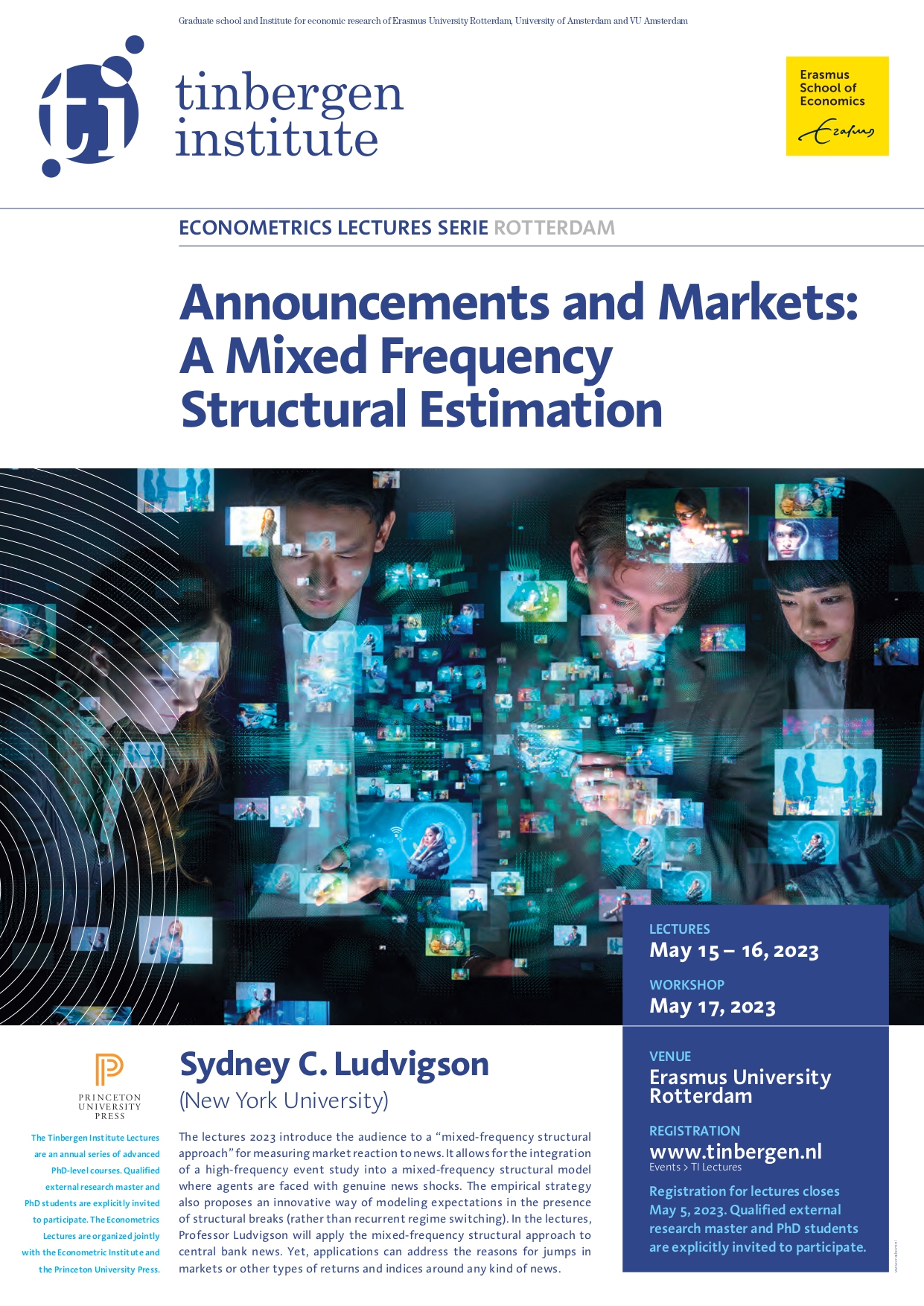Announcements and Markets: A Mixed Frequency Structural Estimation
-
Series
-
SpeakersSydney C. Ludvigson (New York University, United States)
-
FieldEconometrics
-
LocationErasmus University Rotterdam
Rotterdam -
Date and time
May 15 2023, 09:30 until May 16 2023, 16:30
The Tinbergen Institute Lectures are an annual series of advanced PhD-level courses. Qualified internal and external research master and PhD students are explicitly invited to participate. The Econometrics Lectures are organized jointly with the Econometric Institute and the Princeton University Press.
Sydney C. Ludvigson, Julius Silver, Roslyn S. Silver, and Enid Silver Winslow Professor of Economics at New York University, and a Co-Director of the National Bureau of Economic Research Asset Pricing Program, taught the Tinbergen Institute Econometrics Lectures 2023.
Announcements and Markets: A Mixed Frequency Structural Estimation Approach
The lectures introduce the audience to a "mixed-frequency structural approach" for measuring market reaction to news. It allows for the integration of a high-frequency event study into a mixed-frequency structural model where agents are faced with genuine news shocks. The empirical strategy also proposes an innovative way of modeling expectations in the presence of structural breaks (rather than recurrent regime switching). In the lectures, Professor Ludvigson will apply the mixed-frequency structural approach to central bank news. Yet, applications can address the reasons for jumps in markets or other types of returns and indices around any kind of news.
Sydney C. Ludvigson is Julius Silver, Roslyn S. Silver, and Enid Silver Winslow Professor of Economics at New York University, and a Co-Director of the National Bureau of Economic Research Asset Pricing Program. Her research centers on the interplay between asset markets and macroeconomic activity, with applications to role of monetary policy in stock market fluctuations, the measurement and analysis of systematic and demonstrable errors in macroeconomic expectations by both professional forecasters households, the use of machine learning and AI algorithms to measure errors in human judgement, the pricing and risk premia of stock, bond, and housing markets, the role of heterogeneity and wealth inequality in housing and stock market valuations, and the dynamic causal effects of uncertainty for business cycle fluctuations.
